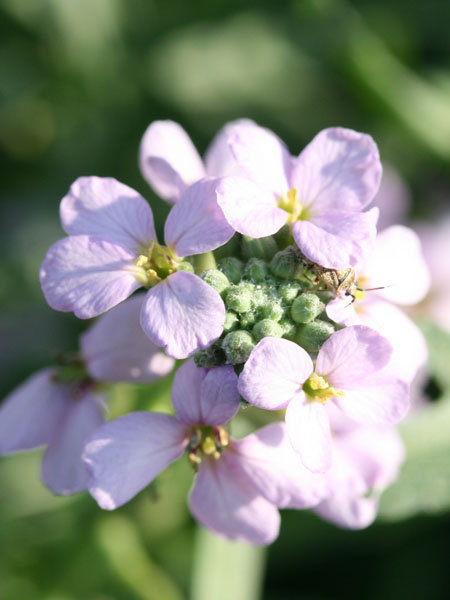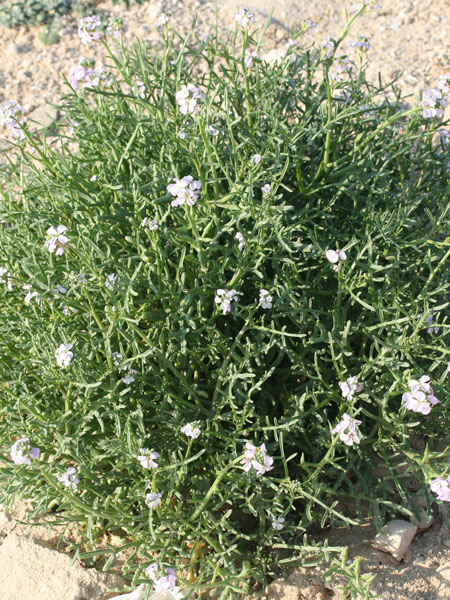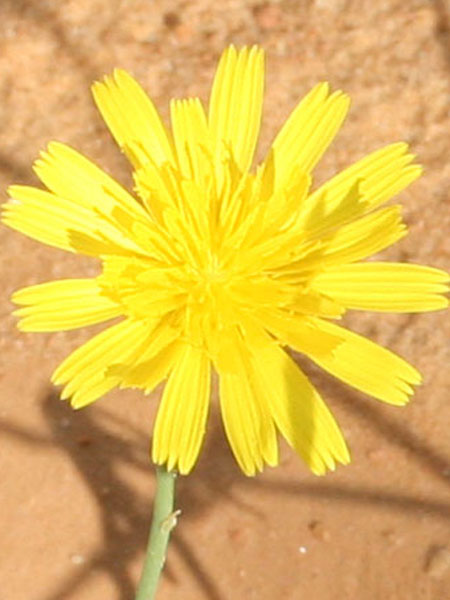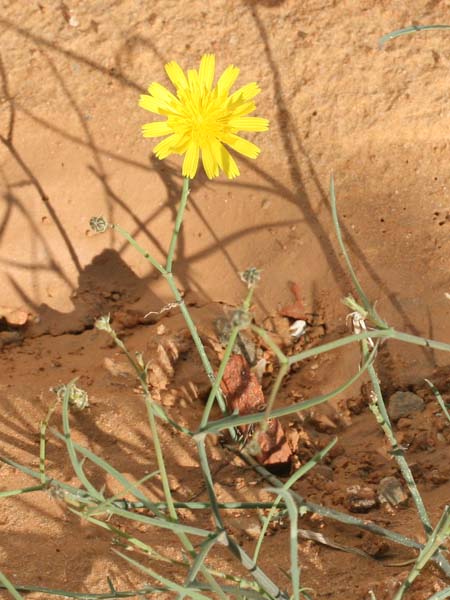Cynomorium coccineum
Kingdom : Plantae / النّباتات
Division : Spermaphyta / البذريات
Clade : Magnoliophyta or Angiospermae / مستورات البذور
Class : Eudicotyledoneae / ذات الفلقتين
Order : Saxifragales / رتبة كاسريات الحجر
Family : Cynomoriaceae [Balanophoraceae] /الفصيلة السّنوموريّة
Genus : Cynomorium
species : coccineum
Chromosomes: 2n=28
Protologue
L., Sp. Pl., ed. 1, 970 (1753)
Common names
Tunisia Arabic English French Tamazight
طرثوث
Maltese Mushroom
General’s Root
Pouce du desert
Cynomorium écarlate
Champignon de Malte
Eponge de Malte
Bite de chien
Oerêellu
Toxic
no
Edible
yes
Latex
no
Botanic description
Genus description
"Parasitic plant with a very special appearance, with a rusty and scaly rhizome, is born of large, fleshless stems of 10-20 cm, unbranched, with applied scales. Inflorescence in a club of a blackish purple, like the whole of the plant, formed of small rudimentary contracted cymes. Polygamous flowers.
Species description
"Very special, non-chlorophyllous plant, very distinctive, dark red, hemiparasite of Amaranthaceae roots. From a rhizome and scaly are born from large fleshy stems of 10-20 cm, unbranched, carrying applied scales.
Leaves in tortoiseshell, scattered, about 5 mm, with irregularly toothed edge. Flowers polygamous. perigone at 4-6 divisions. Stamen 1 in male flowers, ovary 1 ovulate at the hermaphrodite flowers. Inflorescence in a club of a blackish purple, like the whole plant, formed of small rudimentary contracted cymes that bursts across the earth from a vast subterranean rhizome system. Spiciform, very dense, polygamous, elongated and very compact, consisting of thousands of small brownish or reddish flowers. Fruits globular achenes in nut, 1-2 mm pericarp leathery in a persistent perigone. Seeds globular except for a slight protrusion towards its point of attachment, and its surface examined with a magnifying glass is finely reticulated. Its total diameter is one millimeter a third to a millimeter and a half. The micropyle, placed almost opposite the hilum, is signaled by a dark purplish spot that merges, by its edges, into a more general hue clear.
Botanic References
Pottier-Alapetite G. (1981). Flore de la Tunisie Angiospermes –Dicotylédones (Apétales- Dialypétale , Première partie). Imprimerie Officielle de la République Tunisienne (Eds),558 p. Edouard LE FLOC’H, Loutfy BOULOS et Errol VELA. (2010). Catalogue synonymique commenté de la FLORE DE TUNISIE. République Tunisienne, Ministère de l’Environnement et du développement durable, Banque Nationale de Gènes. 500 p www.theplantlist.org
Biology
Life form Perennial Type form Parasit Photosynthesis
Phenology
Blooming
JanuaryFebruaryMarchAprilMayJuneJulyAugustSeptemberOctoberNovemberDecember
Fruiting
JanuaryFebruaryMarchAprilMayJuneJulyAugustSeptemberOctoberNovemberDecember
Map Localization
Ecology
Adaptation Populations often isolated on salt sands of the coast and inside, in the salt marshes and on the cliffs of the sea parasitizing the shrubs of the Amaranthaceae family. Salt bladder yes Invasive no
Geographical distribution
Localization Biocimatic stage Annuel pluviometry (mm) GPS Monastir (Fév.2016) Inferior semi-arid 331 35°47'5.62"N /10°49'56.70"E Cap Bon (Fév.2016 , Tazeka) Superior semi-arid 444 36°32'21.62"N/10°50'55.54"E
General uses
The plant is used as a condiment that adds to the meat. In addition it forms an effective product to make dyes.
Medicinal uses
"The plant is used as: anti-hemorrhoids stimulating agent of spermatogenesis, aphrodisiac, tonic, antivomitive, hypotensive. It has activities: anti-carcinogens, anti-mutagens. Its infusion is used to treat colic and ulcers. It has been consumed as a food, especially during famine because of its relatively high content of oils rich in essential fatty acids and as a dietary supplement to improve potential nutritional and functional qualities. It reduces the risk of disease and presents a valuable source of antioxidants and phytochemicals useful in the preparation of nutraceuticals and functional foods.
NOTE : This website is not that of herbal medicine and assumes no responsibility for the negative effects of the use of plants. Seek advice from a professional before using a medicinal plant.
Systems / Organs / Effects
Digestive System Reproductive System Circulatory System Stimulant Astringent Hypoglycemic Anti-cancer Liver
Test results
TPC DPPH ABTS+ FRAP Year mg GAE g-1 MS CI50 g ml-1 CI50 g ml-1 CE50 g ml-1 411,50 ± 1,00 2,00 ± 0,02 3,82 ± 0,10 17,99± 0,37 2016 Total Phenols content(TPC), Anti-radical potentialities against (DPPH, ABTS), Ferric reducing antioxidant power(FRAP)
Molecules : ADN / Proteins
Chromosomes : 28 Uniprot NCBI
Chemical composition
Name Fatty acid Alpha-Linolenic acid link
Oleic acid link
Palmitic acid link
linolenic acid link
Terpene Essentiel oils
Phenolic acids Cafeic acid link
Chlorogenic acid link
Cinnamic acid link
Gallic acid link
Proticatechic acid link
Phenolic compounds Flavonoïdes
Polyphenols
Quercetine link
Other compouds Glycosides
Saponin
Tunisian references
Chemli R, (2004). Enquête Ethnobotanique de la Flore de Tunisie, Faculté de Pharmacie de Monastir, Tunisie, Programme National de Recherche.
Other references
Abdel-Magid E M, Abed-Rahman HA and Harraz FM.(2001). The effect of aqueous extract of Cynomorium coccineum and Withania somnifera on testicular development in immature Wistar rats., Journal of Ethnopharmacologie.,Volume 75, 1. Abd el-Rahman HA, El-Bardy AA, Mahmoud OM, Harraz FA.(1999). The effect of the aqueous extract of Cynomorium coccineum the epididymal sperm pattern of the rat. Phytoter Res.13(3): 248-50. Al-Qarawi AA et al. (2000). Phytotherapy Research, 14: 288-290. Batanouny KH, (1999). Wild medicial plants in Egypt. Palm Press. Egypt. 207 p.
Duke JA, Duke P-AK, Du Cellier JL.(2008). Duke’s Handbook of Medicinal Plants of the Bible, 1st ed.; CRC Press: Boca Raton, FL, USA. Eddouks M and Zeggwagh NA (2014). A Short Review of Some Medicinal Plants And Phytocompounds With Hypotensive And Hypoglycemic Activities. Int J Diabetol Vasc Dis Res. 2(5), 63-66. Greuter W, Burdet HM and Long G. (1986) . Med- Cheklist. Volume 3 : Dicotylédones (Convolvuaceae- Labiatae). 395 p. Harborne J. B., S. Norio and C. H. Detoni. (2003). Anthocyanins of Cephais, Cynomorium, Euterpe, Lavatera and Pinanga; Biochemical Systematics and Ecology, Volume 22, Issue 8, 835-836. Ikram M, Dar MS, Fakouhi T. (1978). Hypotensive agent Cynomorium coccineum. Pahlavi Med. J. 9(2) :167-81. Le Floc’h E. (1983). Contribution à une étude ethnobotaniquede la flore tunisienne. Programme Flore et Végétation tunisienne. Min. de l’En. Sup. et de la Rech. Sci. 387 p. Lebling, R.W.( 2003). The treasure of tarthuth. Saudi Aramco World, 54: 1-6. Ozenda P. (1977). Flore du sahara. Editions du Centre National de la recherche Scientifique Paris. 622 p. Ozenda P. and Santa S, (1963). Nouvelle flore de l'Algérie et des régions désertiques méridionales. Editions du Centre National de la recherche. Scientifique Paris. 1170 p. Paolo Zucca , Antonella Rosa , Carlo I. G. Tuberoso, Alessandra Piras , Andrea C. Rinaldi , Enrico Sanjust , Maria A. Dessì , Antonio Rescigno . (2013). Evaluation of Antioxidant Potential of “Maltese Mushroom” (Cynomorium coccineum) by Means of Multiple Chemical and Biological Assays Nutrients 5(1), 149-161 http://www.almerinatura.com/parasitas/cynomorium-coccineum.html Pottier Alapetite G. (1979). Flore de la Tunisie. Angiospermes- Dicotylédones, Apétales -Dialypétales. Programme flore et végétation tunisiennes. 651p. Robert W, Lebelling Jr.(2003). Dharmananda, S. Cynomorium—Parasitic Plant Widely Used in Traditional Medicine. Available online: Saudi Aramco World. Volume 54, Number2 http://www.itmonline.org/arts/cynomorium.htm (accessed on 8 January 2013) Vanden Berghen C. (1981). Liste commentée des plantes vasculaires observées dans l'île de Djerba (Tunisie méridionale). Le jeunia 105, Octobre 1981. 38 pages.





























